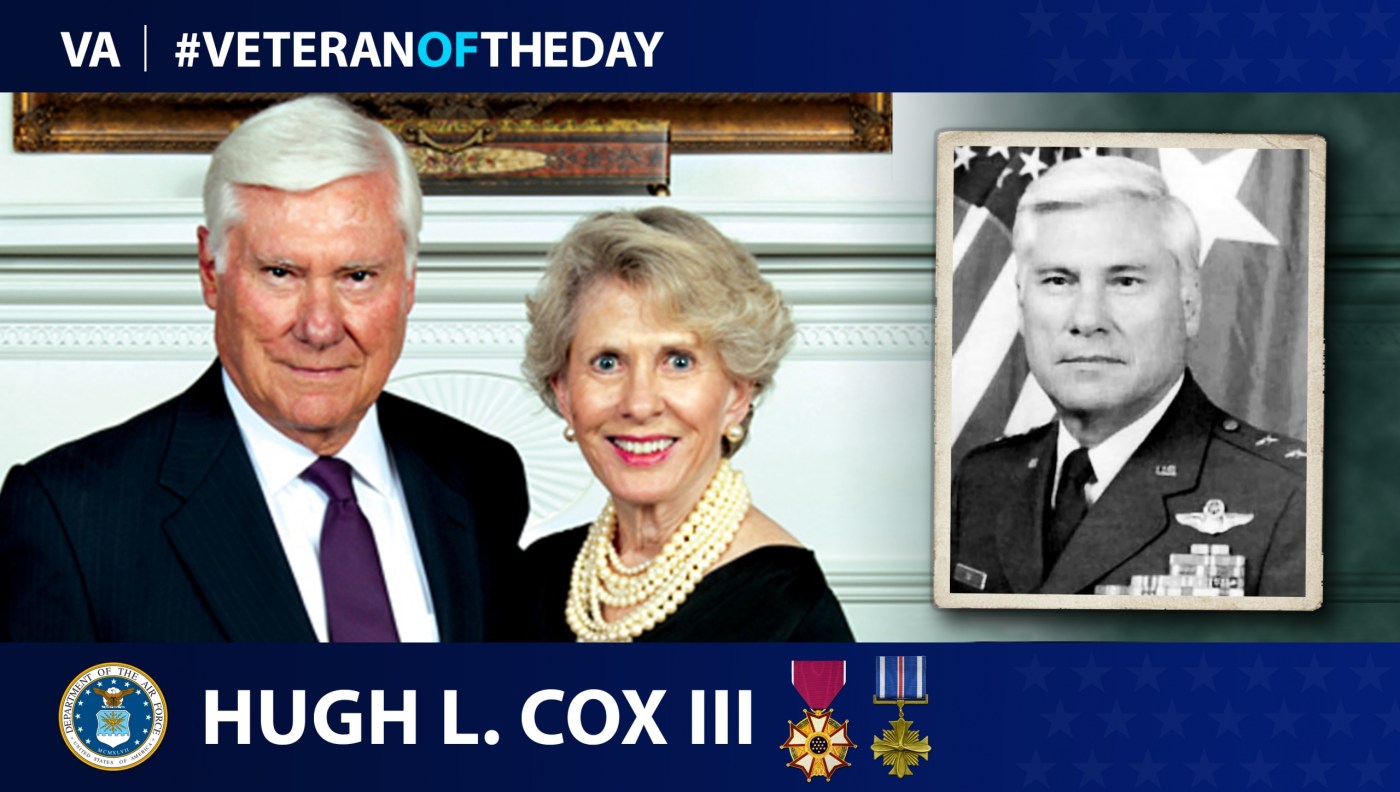
Today’s #VeteranOfTheDay is Air Force Veteran Hugh L. Cox III, who served as an aviator during the Vietnam War and in peacetime.
Hugh L. Cox III was born in 1934 in Fort Worth, Texas. After high school, he attended Texas Christian University and graduated with a degree in fine arts in 1957. He also received his commission through the Reserve Officer Training Corps program in 1957. Cox then underwent pilot training in Oklahoma at Vance Air Force Base, where he received his pilot’s wings in 1958.
During his military career, Cox’s first assignment was at Scott Air Force Base in Illinois, where he served as an aeromedical evacuation pilot and assistant chief of aircrew standardization and evaluation. In 1963, Cox served as a command pilot and aide-de-camp for the commander of Alaskan Air Command at Elmendorf Air Base in Alaska. He transferred to Ent Air Force Base in Colorado in 1966 and served as an executive officer to the commander-in-chief at the North American Aerospace Defense Command (NORAD).
In 1970, Cox completed Air Command and Staff College. Afterward, he joined the 7th Airborne Command and Control Squadron, stationed at Udorn Royal Thai Air Force Base in Thailand. From 1971 to 1973, Cox served in England at numerous Royal Air Force stations before returning to serve as deputy commander of the 21st Air Base Group at Elmendorf Air Force Base.
Cox was the first American commander of the NATO Airborne Early Warning and Control Force (NAEW&C Force) in Europe.
In May 1978, Cox graduated from the Air War College. From 1978 to 1981, he served as deputy commander of operations for the 552nd Airborne Warning and Control Wing at Tinker Air Force Base in Oklahoma. In 1981, Cox was assigned to the 1st Special Operations Wing at Hurlburt Field in Florida. As wing commander for the 2nd Air Division at Hurlburt Field, Cox was responsible for all Air Force special operations domestically and abroad. Cox then moved to West Germany in 1984 to serve at the NATO base in Geilenkirchen. In 1987, Cox became deputy commander-in-chief at the newly created U.S. Special Operations Command in Florida.
Overall, Cox flew 1,000 combat hours during the Vietnam War, predominantly in the EC-130. In total, he has over 10,000 flying hours as a pilot. Cox retired from the Air Force in 1990 with the rank of major general. During his military service, Cox received a Defense Distinguished Service Medal, Legion of Merit, Distinguished Flying Cross and a Joint Service Commendation Medal.
Cox later became adjutant general of Alaska, commanding the state’s National Guard. In this role, he created the Alaska National Guard Youth Corps, a program that thirty other states have since adopted. Cox also was a member of the cabinet of Alaska’s governor, serving as the commissioner of Military and Veterans Affairs. He received an Alaskan Distinguished Service Medal in 1994 for his service to the state.
Thank you for your service.
Nominate a Veteran for #VeteranOfTheDay
Do you want to light up the face of a special Veteran? Have you been wondering how to tell your Veteran they are special to you? VA’s #VeteranOfTheDay social media feature is an opportunity to highlight your Veteran and his/her service.
It’s easy to nominate a Veteran. Visit our blog post about nominating to learn how to create the best submission.
Veterans History Project
This #VeteranOfTheDay profile was created with interviews submitted to the Veterans History Project. The project collects, preserves, and makes accessible the personal accounts of American war Veterans so that future generations may hear directly from Veterans and better understand the realities of war. Find out more at http://www.loc.gov/vets/.
Contributors
Writer: Jack Patterson
Editors: Alexander Reza and Theresa Lyon
Fact checker: Kennady Hertz
Graphic artist: Kiki Kelley
Topics in this story
More Stories
This week’s Honoring Veterans Spotlight honors the service of Army Veteran David Bellavia, who received a Medal of Honor from the Iraq War’s deadliest operation, the Second Battle of Fallujah.
This week’s Honoring Veterans Spotlight honors the service of Army Veteran Scotty Hasting, who served in Afghanistan.
This week’s Honoring Veterans Spotlight honors the service of Army Veteran Roy Sheldon, who served in 97th General Hospital in Frankfurt, Germany.






